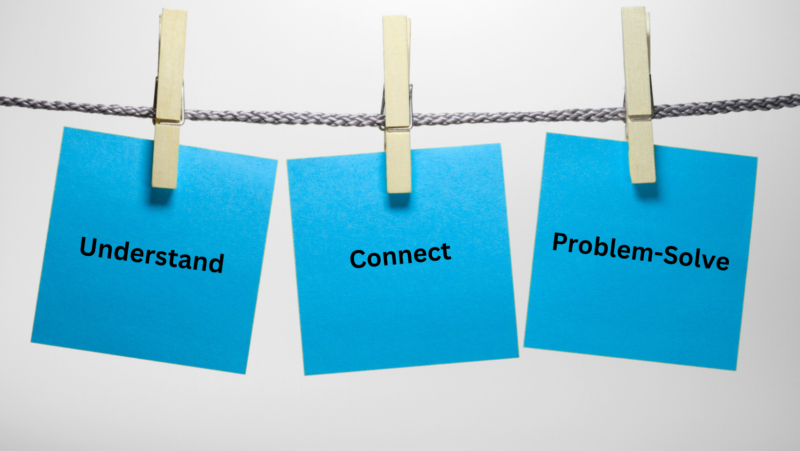Blog Short #169: How to Use Everyday Encounters to Increase Your Emotional Intelliegence

Photo by julief514, Courtesy of iStock Photo
Think back to an interaction you had with someone that upset you. Perhaps a conversation that immediately put you on the defensive. Maybe someone criticized you, or a colleague disagreed with you in a condescending way. Or your boss questioned your motives, intimating that you were somehow being dishonest.
There you were, forcefully gripping your emotional sword and shield, ready to do battle! You might have lashed back out or remained quiet while seething inwardly.
Either way, you spent most of the rest of the day rehashing it with counterattacks in your mind, trying to find some way to discount the input and let go of the hit to your self-esteem.
We have many such experiences in life. Sometimes, we defend as I just described, yet other times, we take it in and attack ourselves. You can do both simultaneously, but in either case, you miss an opportunity for growth, which is today’s subject.
Every encounter you have, whether negative or positive, provides an opportunity to learn something of value.
You can learn more about yourself, about someone else, and about human nature in general. You can get better at regulating your emotions under stressful circumstances. And you can reduce your sense of isolation and feel that you belong.
There’s something to gain in all cases, even if the experience was uncomfortable or painful.
Before I get into how you can use these types of encounters to your benefit, let me quickly review four skills associated with emotional intelligence because we’ll use these in our approach.
Definition of Emotional Intelligence
Emotional intelligence, or EQ, is “the ability to recognize, interpret, and regulate your own emotions, and understand those of other people” (Cherry).
Five skills are usually associated with EQ, but today, we’ll focus on four.
1. Self-Awareness
Briefly, self-awareness is concerned with your capacity to recognize, identify, and understand your emotions and moods. It also includes increased awareness of how your behavior and emotions affect those around you.
2. Self-Regulation
Self-regulation is associated with how you manage your emotions. It’s about expressing your emotions effectively and appropriately, especially when dealing with conflicts or trying situations.
That doesn’t mean you should suppress emotions, but rather allow them to surface and accept them so you can work with them.
You can see how the more self-aware you are, the more success you’ll have in regulating your emotions. And, the more likely you are to be able to adapt to change, be flexible, and be responsible.
3. Empathy
A natural outgrowth of being self-aware and comfortable with your emotions is the ability to understand the feelings of others more easily.
You can see things from the other person’s perspective and understand their thoughts and feelings. You can connect and show compassion.
By the way, you can also empathize with yourself. Empathy provides insights into both your and other’s behavior.
4. Social Skills
Finally, emotional intelligence includes social skills that allow you to communicate and interact in ways that build rapport and make meaningful connections with others. Active listening, showing interest, openness to new ideas, tolerance, and respect are all part of this skill set.
How to Apply Emotional Intelligence Skills to Encounters
Now, back to our original task:
- How can you use these four emotional intelligence skills to help you learn from encounters with others?
- How can you turn these encounters, even the negative ones, into experiences that broaden and sharpen those skills for your benefit?
Your goal is to take challenging encounters (as well as good ones) and use them to:
- Become more self-aware
- Increase your ability to empathize
- Grow your understanding of human nature and why people behave as they do
- Hone your skills in communicating and interacting
Each encounter becomes a learning experience.
If you can create that mindset and keep it up front when you find yourself in difficult situations where the interactions are stressful, you can respond in a way that leans into the encounter rather than defending.
That doesn’t mean you won’t feel defensive or uncomfortable when attacked, criticized, demeaned, dismissed, ignored, or any other negative outcome. You likely will.
But when you take the time to digest the encounter – when you’re going back over it in your mind – ask yourself the right questions to help you use it. Try these:
1. Is there any lesson I can take away from this experience?
Maybe you need to change a behavior or your approach to someone. You might need to become more flexible or prepare better for a situation. What can you take away and use in the future?
2. What might be going on with that person that led to their behavior?
This is an opportunity to increase empathy. Is this someone who’s struggling in some way or is under stress? Was their behavior a projection?
You have to be careful with this one because it’s easy to get into a judgment mode. Stay in an observational mode if you can.
For example, instead of just writing someone off angrily as a narcissist, you might observe that this person takes most everything personally and easily defends against perceived criticism. That might explain the quick attack when you didn’t agree with something he said.
Observe as much as possible without condemnation.
3. Although the delivery was horrible, was there any truth in what was said you can make use of?
Is there any truth to what you heard you might use to increase your self-awareness? Someone can give you exaggerated and hurtful feedback, but when you think objectively about it, you can sift out whether there are any kernels of truth you could use.
4. Are there specific issues I haven’t addressed that keep coming up? What should I do about them?
Is the encounter repetitive? Do you keep having this same experience? If so, you’re being nudged to address it. You might need to set boundaries with someone, change a behavior, or reassess a relationship.
Life throws us the same experiences over and over until we pay attention to the issues involved and resolve them.
The Upside
The whole purpose of viewing encounters this way is to keep your attention on your issues, thereby increasing your emotional intelligence and, as a result, your happiness.
It’s human nature to focus outward. We all do it. It’s much easier to point out dysfunctional behavior or harsh emotions in someone else than in ourselves.
If we look inward, we have to deal with our weaknesses and feelings of self-recrimination, which messes with our self-esteem.
However, an emotionally intelligent person accepts that they have lots of things that need working on all the time and can see that without self-judgment. They don’t beat themselves up. They work on improvements.
See yourself as a work in progress that’s never finished. You’re a human lab for growth and development, which means there are always blemishes and wrong turns that require corrections. It’s humbling, but that’s a good thing.
What about positive encounters?
Positive encounters are a blessing. Fortunately, many encounters inspire and touch you emotionally in ways that restore your faith in human nature and yourself.
Yet, there are always those that test you.
The point is that every encounter has something to teach you, and if you’re looking for it, you’ll find what that is and make use of it.
If you’re not looking, you might miss an important lesson and opportunity for growth.
That’s all for today.
I hope you have a great week, as always!
All my best,
Barbara








